Peter Bosch takes you back to a turning point in comics history…
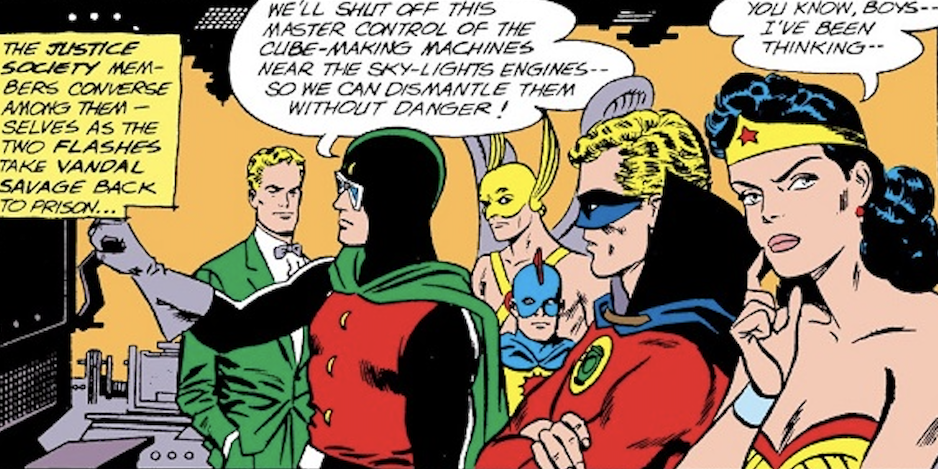
By PETER BOSCH
In 1963, I was 8 years old when I discovered The Flash #137 — which went on sale 60 years ago, on April 18 of that year. I had been reading comics for a few months by then and delighting in all the superheroes published by DC. But The Flash #137 was especially remarkable because it introduced me to the Justice Society of America, the very first team of superheroes, from way back in the Golden Age of comic books.
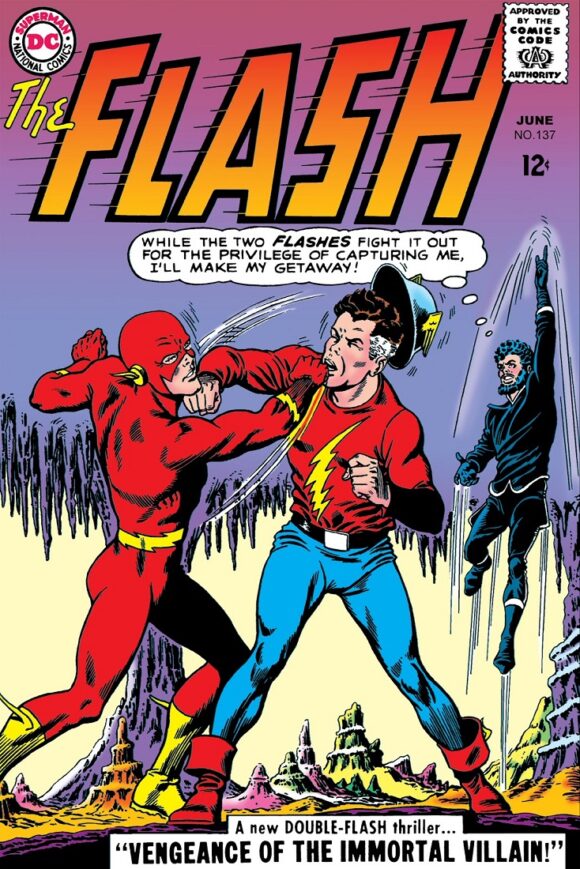
The Flash #137 (June 1963) – Carmine Infantino, pencils. Murphy Anderson, inks.
Because I had started reading comics in 1963, I had missed both The Flash issues #123 (Sept. 1961) and #129 (June 1962), which had the Golden Age Flash interacting with Barry Allen’s Flash… but here was Jay Garrick in #137 (June 1963) and, together, the Flashes helped revive (in more ways than one) the Justice Society of America, which had been caught by their longtime foe Vandal Savage and put into a form of suspended animation within display cubes. I couldn’t believe what I was seeing: another Flash, another Green Lantern, another Wonder Woman, another Atom, another Hawkman, and more! (Historical note about The Flash #129: The JSA did appear in that issue but only as a brief passing thought as Jay remembered their last adventure together.)

The Flash #123 (Sept. 1961) and #129 (June 1962) – Both by Infantino, pencils, and Anderson, inks.
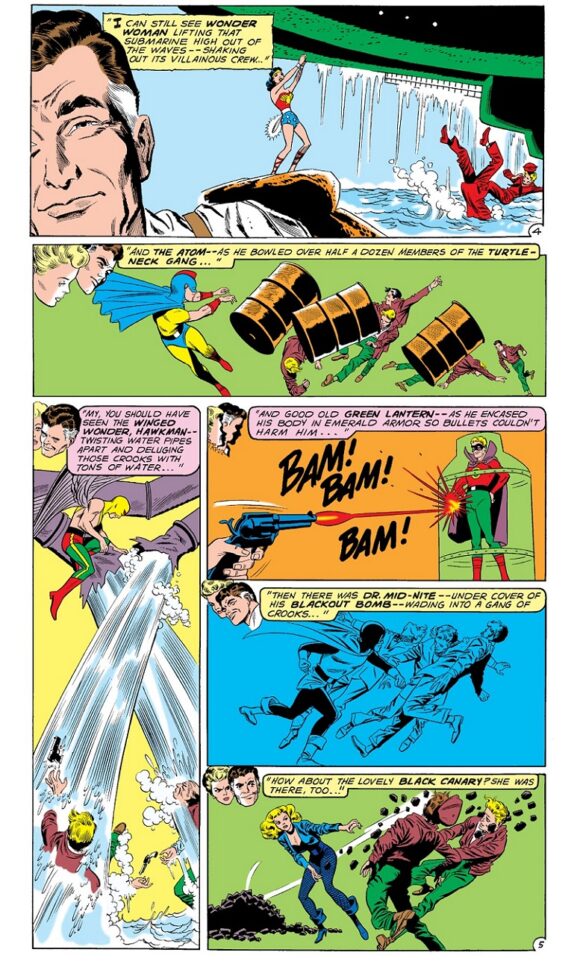
The Flash #129 (June 1962) – story page – Gardner Fox, script. Infantino, pencils. Joe Giella, inks.
After the two Flashes freed the members of the JSA and defeated Savage, the Golden Age Wonder Woman suggested to her teammates that they come out of retirement and meet on a regular basis.
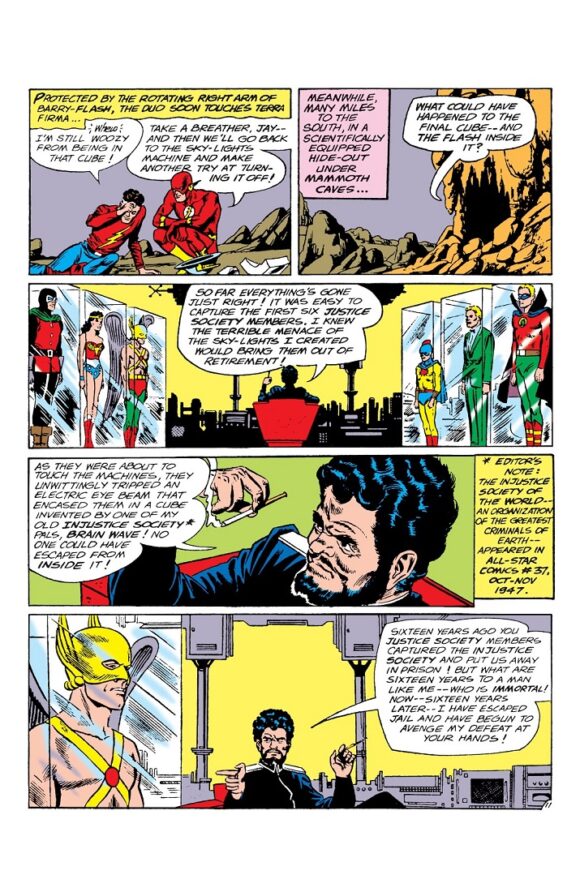
The Flash #137 (June 1963) – story page – Fox, script. Infantino, pencils. Giella, inks.
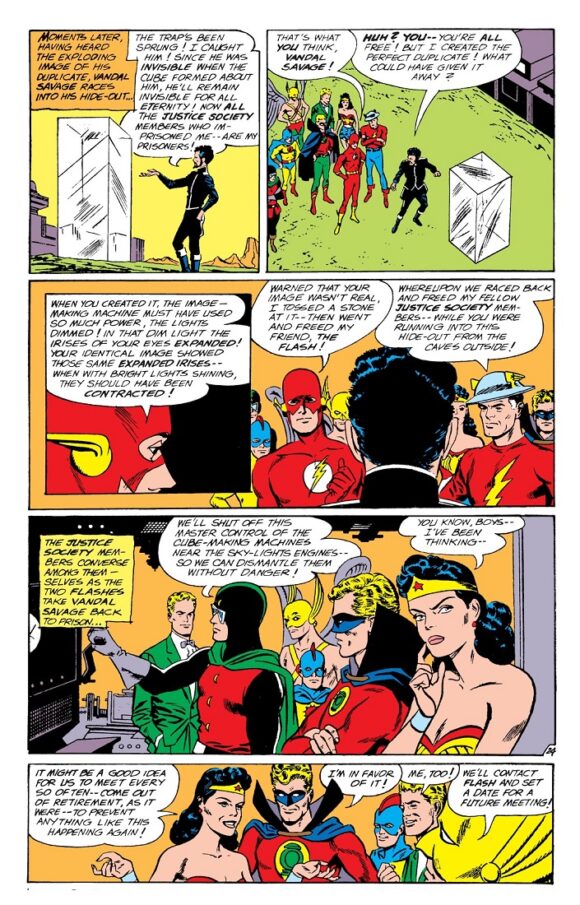
The Flash #137 (June 1963) – story page – Fox, script. Infantino, pencils. Giella, inks.
(What I didn’t know at the time was that this was a return to the Justice Society of America by the creative team of The Flash #137: Gardner Fox wrote the first-ever coming together of the JSA back in All-Star Comics #3 (Winter 1940), and editor Julius Schwartz, penciller Carmine Infantino, and inker Joe Giella all worked on the title later on in its run.)
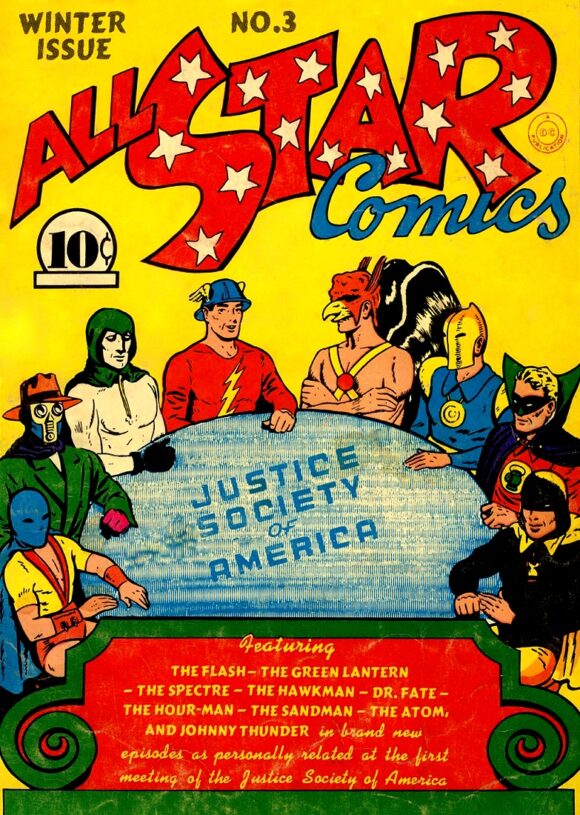
All-Star Comics #3 (Winter 1940) – E.E. Hibbard, cover art.
Two months after the revival, Justice League of America #21 (Aug. 1963) had the JSA and JLA meet and team up for the first time, and the story continued in #22 (Sept. 1963).
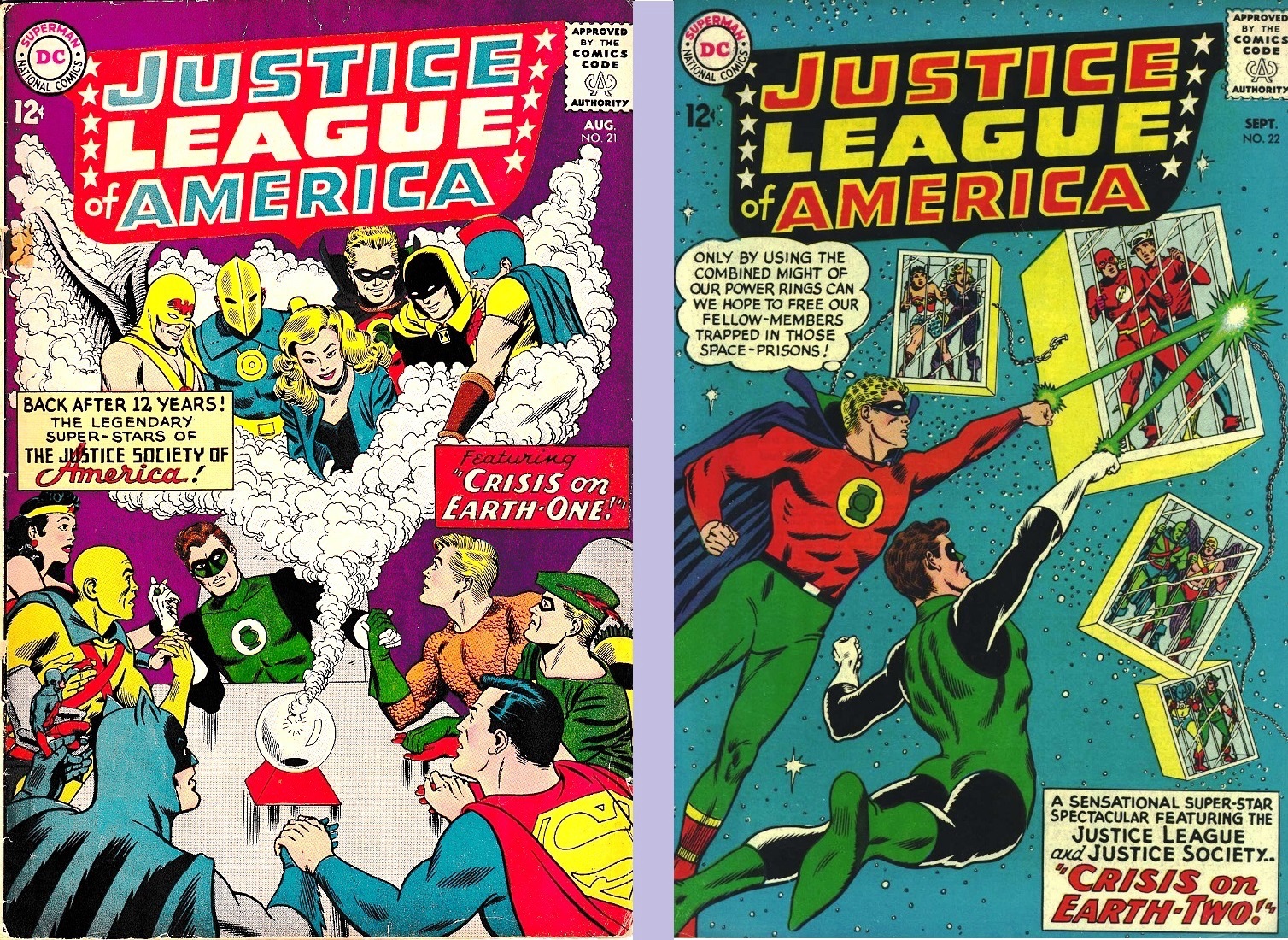
Justice League of America #21 (Aug. 1963) – Mike Sekowsky, pencils; Anderson, inks; and #22 (Sept. 1963) – Anderson art.
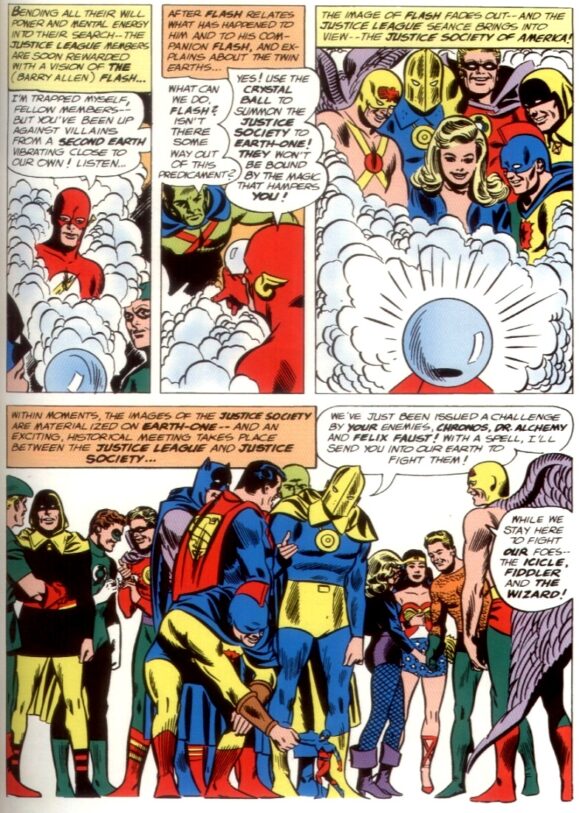
Justice League of America #21 (Aug. 1963) – story page – Fox, script. Sekowsky, pencils. Bernard Sachs, inks.
After that, it became an annual event in the pages of Justice League of America. DC also promoted the JSA by featuring several members in issues of Showcase and The Brave and the Bold, as well as guest appearances in their modern-day equivalents’ comic books (e.g., the GA Atom in The Atom and the GA Green Lantern in Green Lantern).
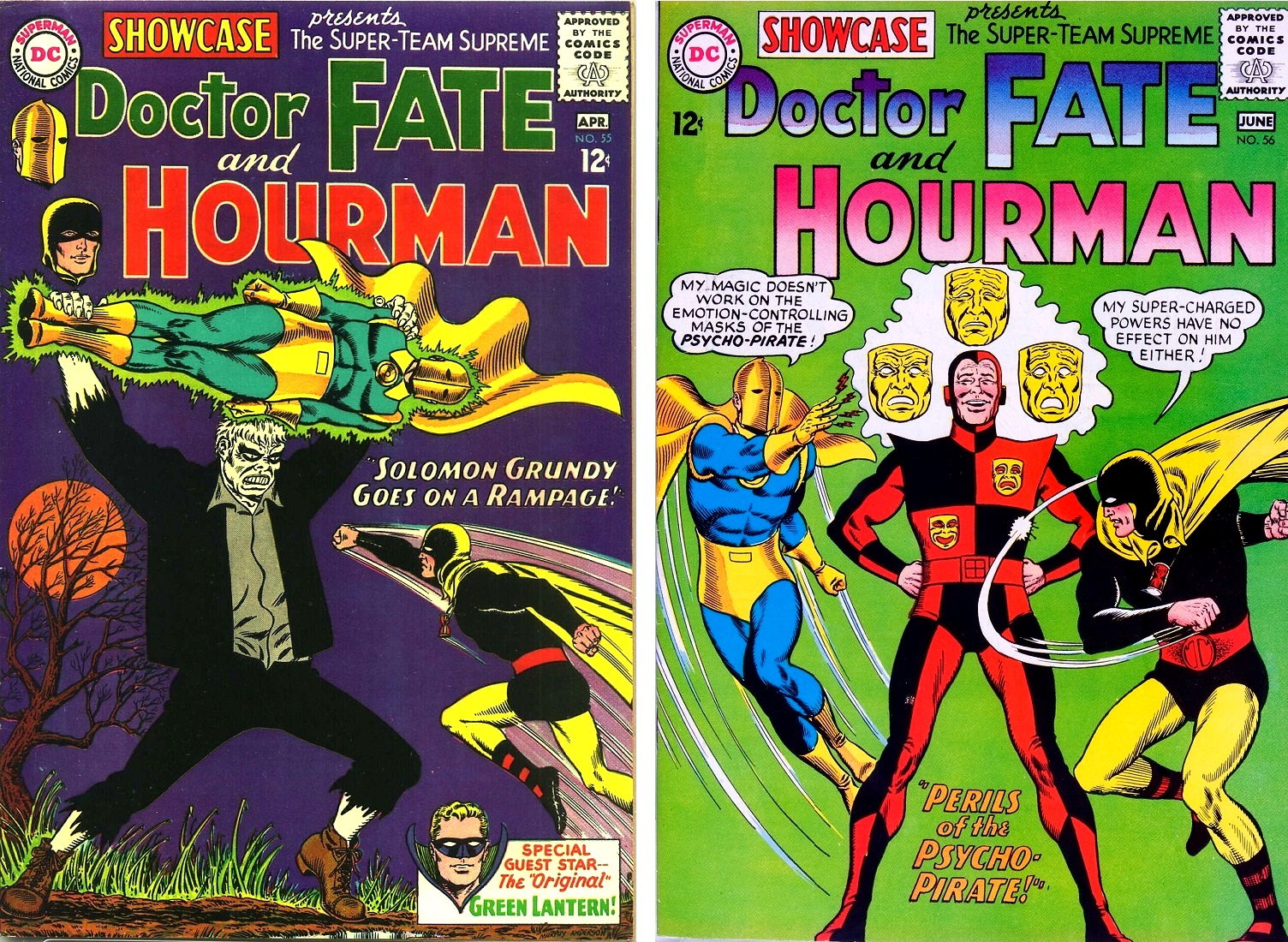
Showcase #55 (Mar.-Apr. 1965) and #56 (May-June 1965) – Anderson art on both.
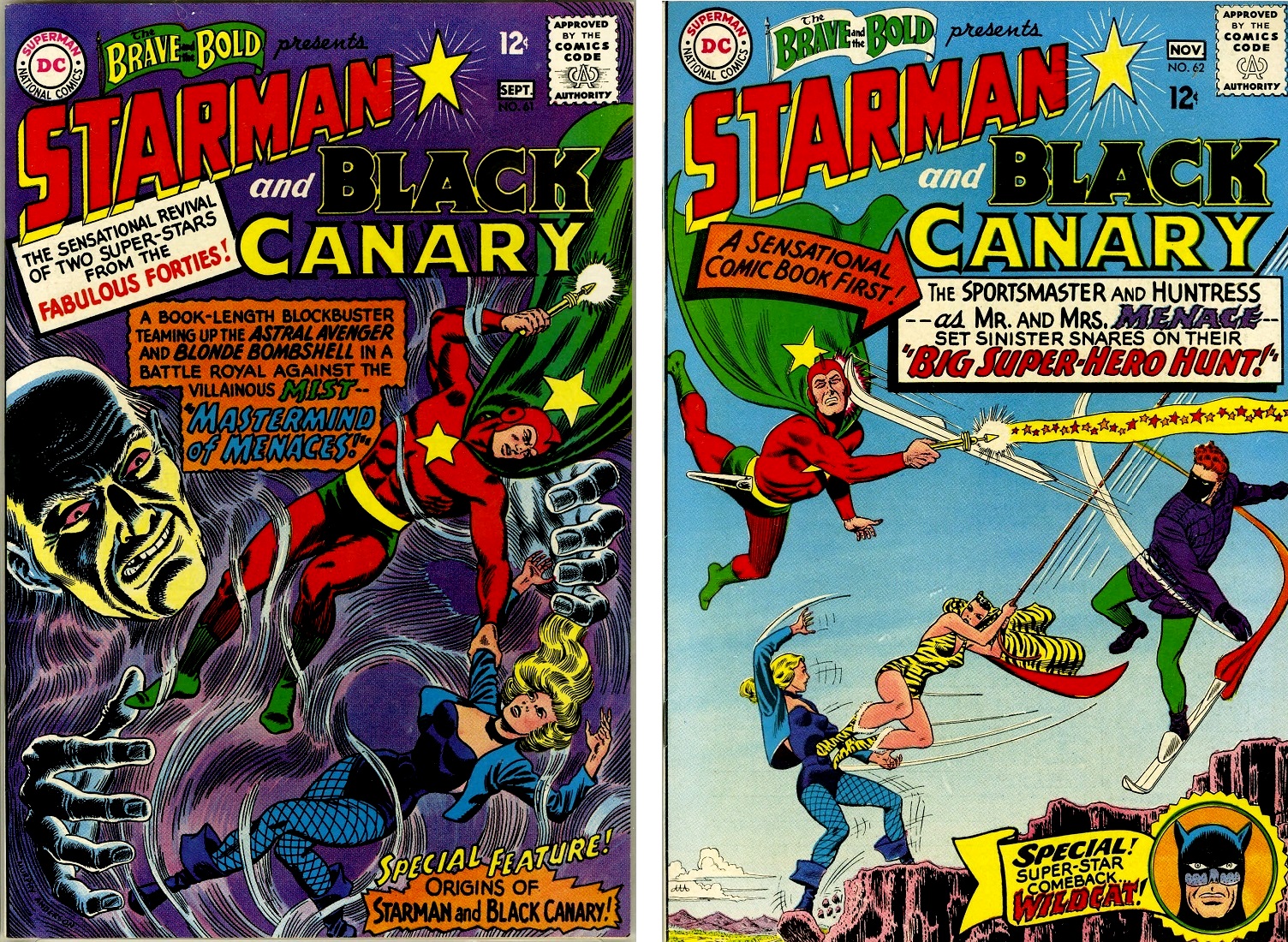
The Brave and the Bold #61 (Aug.-Sept. 1965) and #62 (Oct.-Nov. 1965) – Anderson art on both.
With the annual JLA/JSA team-ups, DC upped the game each time by bringing in heroes and villains from Earth-Three, Earth-A, and other-dimensional Earths (comic characters acquired by DC from defunct publishers), which eventually led the way to 1985’s Crisis on Infinite Earths. (Justice League of America #21’s story title was “Crisis on Earth-One” and #22’s was “Crisis on Earth-Two.”) But even with the reduction of the amount of DC’s characters during that monumental storyline, the JSA is still around today. As a matter of fact, Geoff Johns, one of comic’s very best writers – and who wrote the adventures of the JSA from 2000 to 2010 – has just returned in 2023 with a brand new Justice Society of America limited series. I may no longer be the young kid I was in 1963, but 60 years later I am still delighted whenever I get to read a new tale starring the JSA.
For fun, here are three pin-ups of the team by three of the best artists to have worked on the JSA in different eras: Murphy Anderson, George Pérez, and Alex Ross:
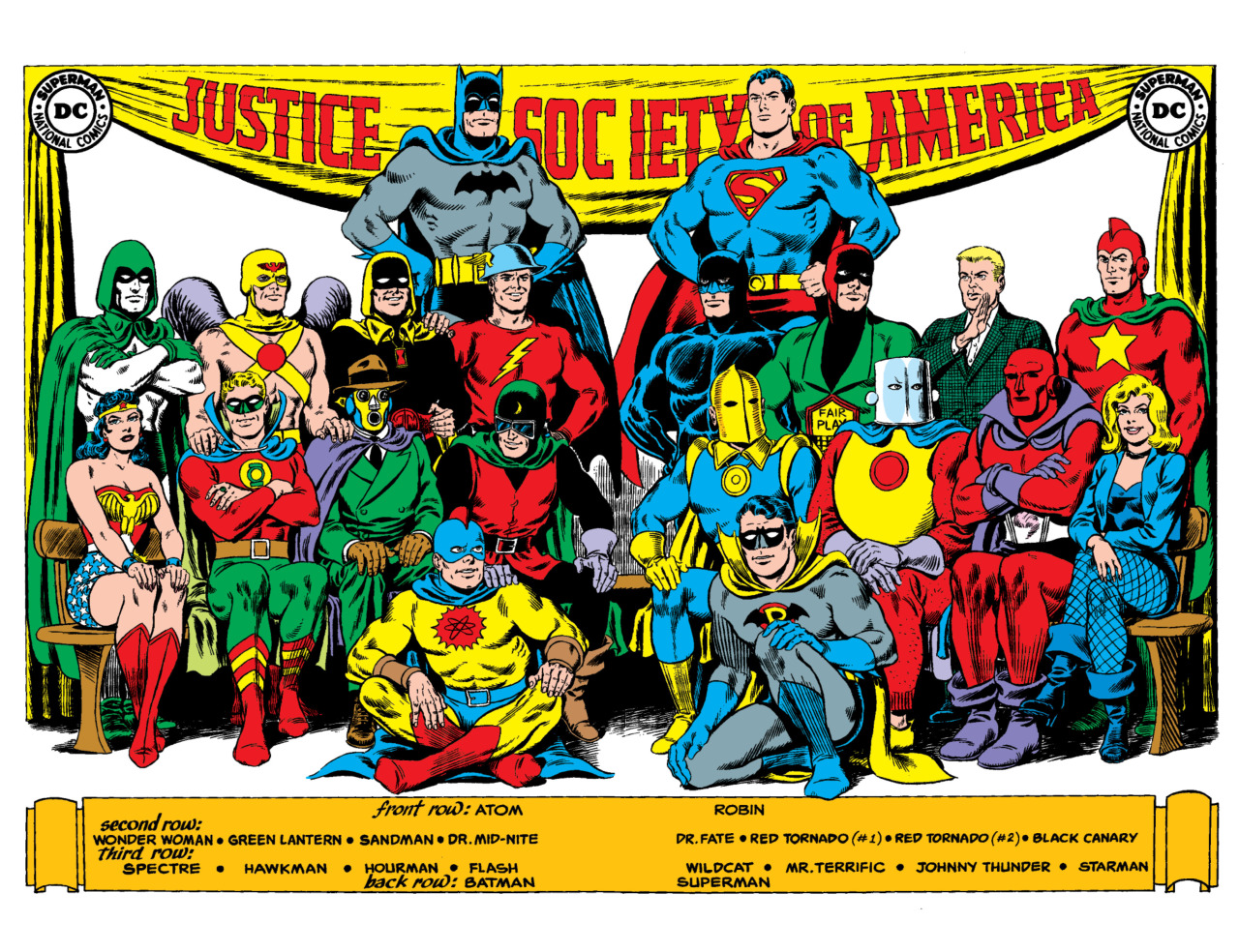
Justice League of America #76 (Nov.-Dec. 1969) – Anderson art.
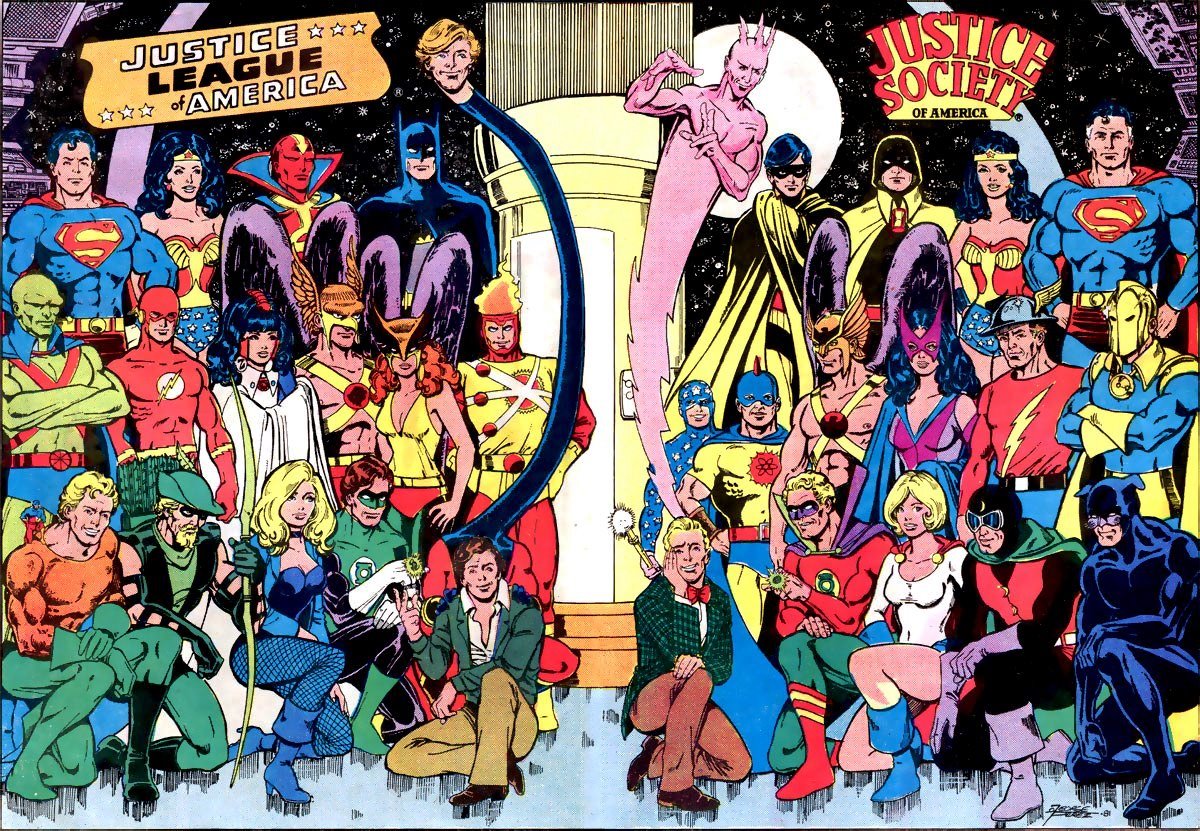
Justice League of America #195 (Oct. 1981) – George Pérez art.
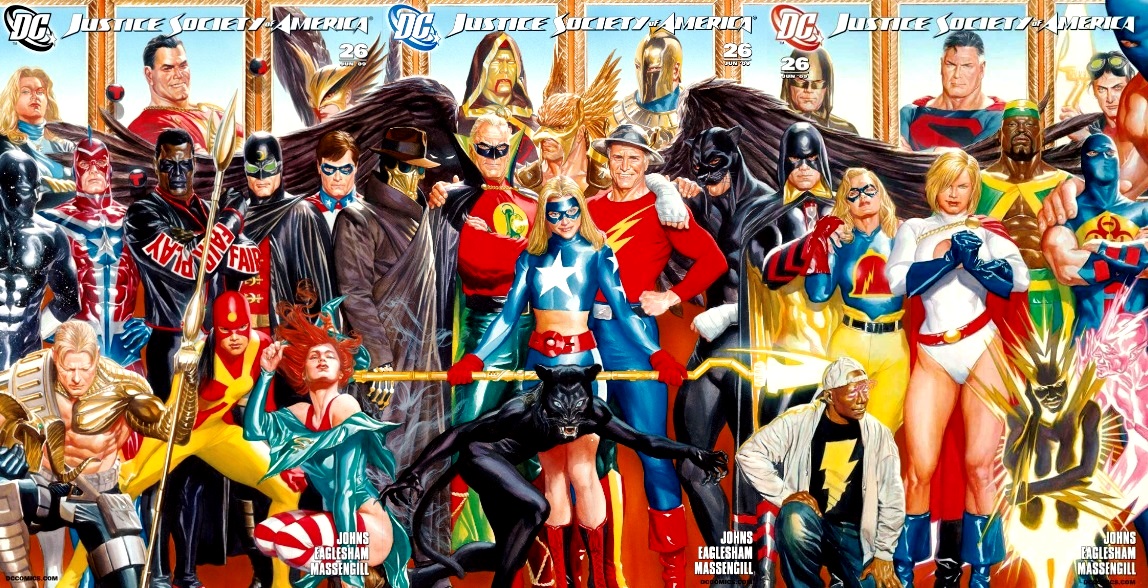
Justice Society of America #26 (June 2009) – Alex Ross art.
—
MORE
— 13 SUMMER SPLASH PAGES: The JUSTICE LEAGUE Meets the JUSTICE SOCIETY. Click here.
— PAUL KUPPERBERG: My 13 Favorite DICK DILLIN JLA-JSA Crossover Stories. Click here.
—
13th Dimension contributor-at-large PETER BOSCH’s first book, American TV Comic Books: 1940s-1980s – From the Small Screen to the Printed Page, has just been published by TwoMorrows. He has written articles and conducted celebrity interviews for various magazines and newspapers. Peter lives in Hollywood.
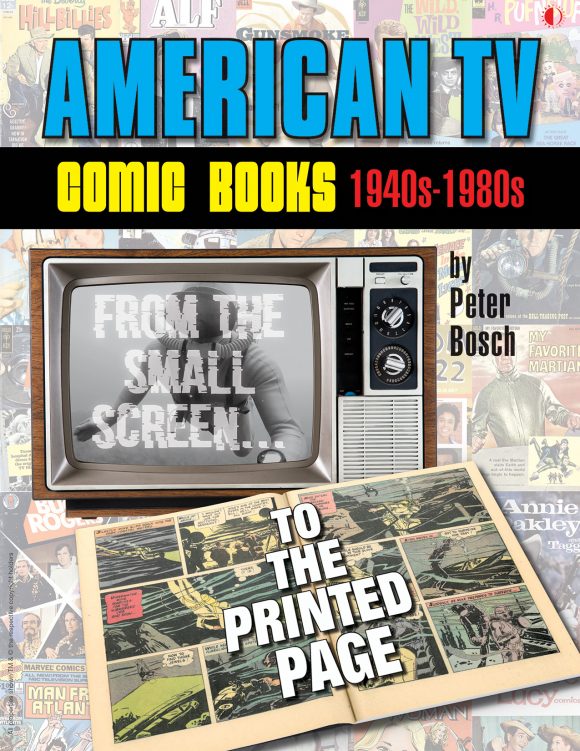

April 18, 2023
Crisis on Infinite Earths should have ended with only a handful of Earths remaining, most especially Earth-2. The real-life guardians of the DC Universe IPs should have never allowed its demise. The many “crises” since then have been an effort to try to fix the damage that was done. I propose moving to “Earth Gold”, “Earth Silver”, Earth Bronze”, and so forth. Then, if a writer wants to set a story in superhero times gone by, they simply have it set on one of those Earths.
April 18, 2023
I’m all for this. Let the creative team of both writer and artist just tell good stories. There’s market room there for all stories.
April 21, 2023
Sounds good to me.